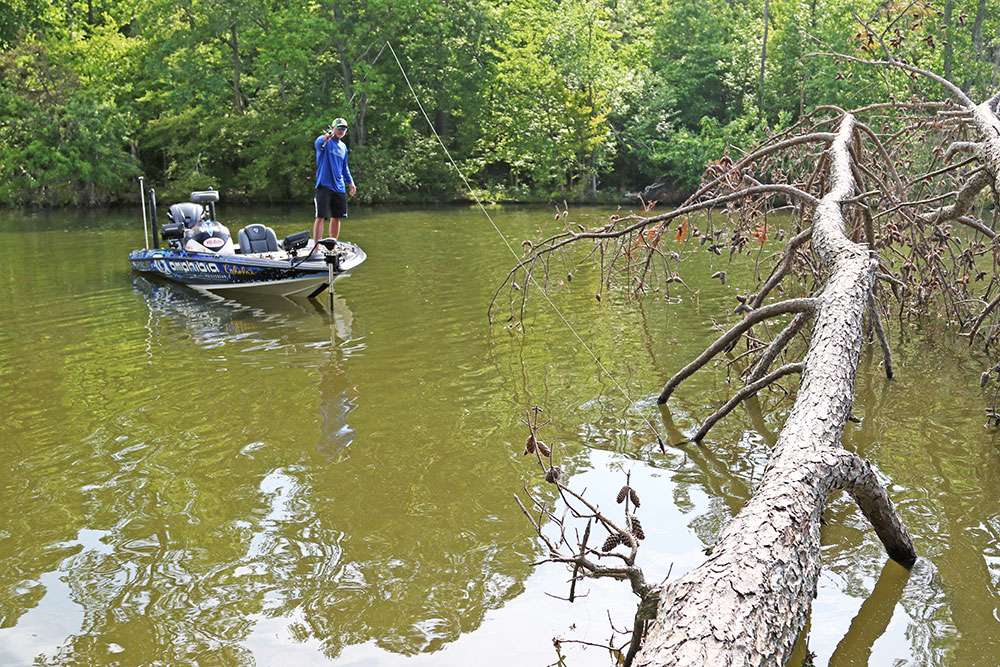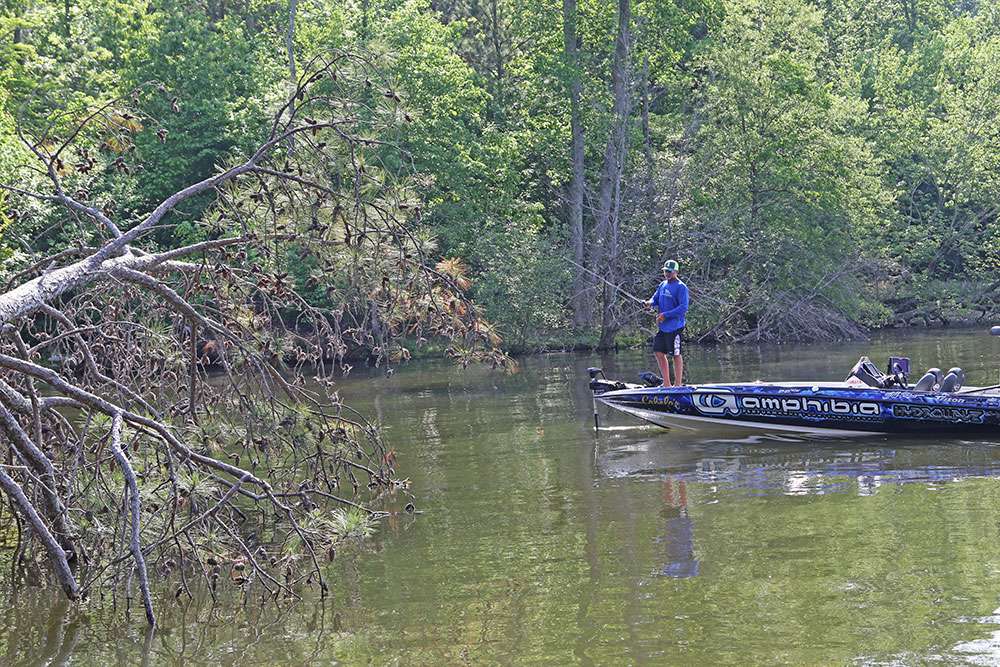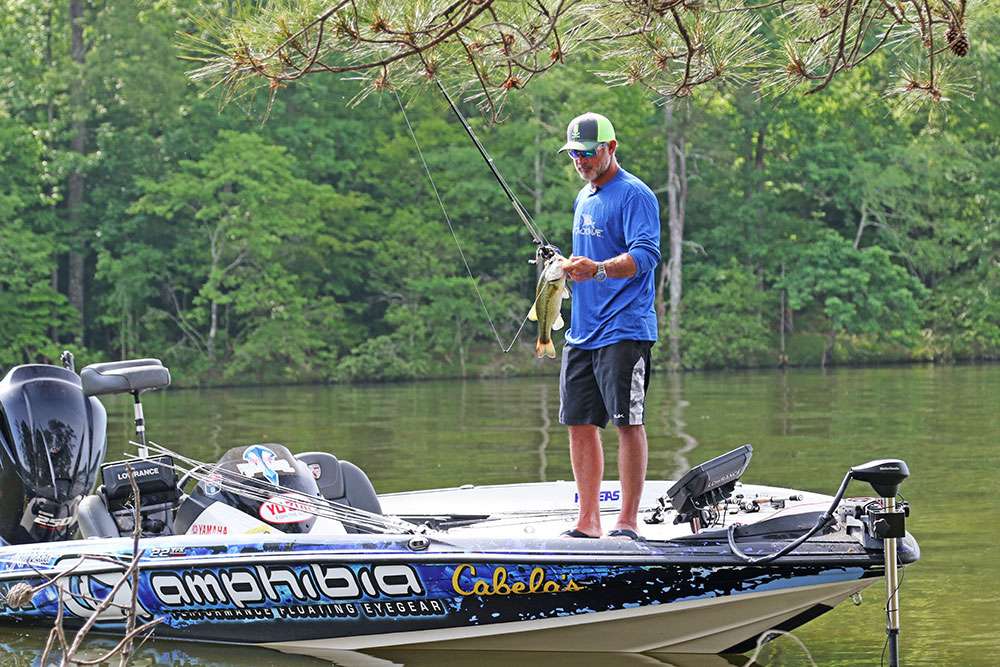
We tend to overuse the 24/7/365 thing, but ask Bassmaster Elite Series pro Jeff Kriet what he can depend on just about anytime he hits southern waters and he’ll say “laydowns” every time.
“Laydowns are always high percentage areas to catch a bass,” he said. “Even in the wintertime, if they’re in the right depth, they can be a big deal. I don’t know that you ever pass up a pretty laydown.”
That being said, the Elite pro from Ardmore, Okla., follows a three-step rule for identifying promising trees.
1. Multiple Options: Waves, wind and Father Time prune laydowns until there’s little more than a trunk and a few spindly branches. Kriet won’t necessarily ignore these, but he prefers a full-bodied laydown.
“I like the ends to be running into deeper water because that offers shallow cover, medium range cover and deep cover,” he said. “It’s important when you get a bite to pay attention to where the fish was sitting.
“I like to say: ‘Are they in the fuzzy part of the tree, or are they on the hard part of the tree. A lot of times, those fish will want to be on the slick, hard part of the laydown, but if it has a bunch of limbs, that may not be the deal.”
“When I decide that there might be a fish on that laydown, angles become very important. I may make 10-12 casts on both sides from different directions. I’ll try pulling uphill, downhill, or they could be suspended off the end. A laydown can be pretty complex.”
Essential to this is bait diversity. Kriet loves flipping jigs or Texas-rigged plastics, but if this deal goes unrewarded on a promising laydown, he’ll show the fish a squarebill. Scoring with the crankbait tells him the fish probably aren’t relating to the bottom.
2. Forks: Where a tree trunk divides, or the notches between two major branch sections; these sections offer separation with proximity — a potentially productive formula for bass that like to move throughout their cover.

3. Peripheral Debris: Kriet likes a spread of broken limbs surrounding his main laydown because such satellite objects may offer bonus opportunities for solitary fish that have bypassed — of have been pushed off — the main structure. Often, peripheral wood comes from the same laydown, but natural forces will also push unrelated wood into a stationary.
For example, during a recent outing, Kriet spotted a small twig barely the size of a pencil piercing the surface. Looking closer, he realized it was the upper reach of a secondary branch that laid adjacent to the primary laydown he was fishing. A targeted pitch to his new find yielded a keeper fish.

“Don’t just make one flip to a laydown and say ‘He’s not there,’” Kriet said. “I like to go to the meat of the tree and flip all over the beautiful laydown, but then I’lll make a few random throws around to see if I find a broken limb or a small piece of wood. I may have been the eighth person to fish that laydown, but nobody flipped that one little piece that was 4 feet to the left.”
In closing
If he had to choose, Kriet would prefer to flip/pitch laydowns, but he stresses the wisdom of diversity — and not just in bait colors and plastic body styles. Rather, he’ll keep a range of weights on standby so he can show the fish different fall rates. Some days, they’ll react to a zippy descent; other days, they dig that slow fall.
“And remember, there’s not always just one fish per laydown,” Kriet said. “Just because I caught a fish at 9 o’clock doesn’t mean I can’t come back 30 minutes or an hour later and catch another one.
“A good piece of wood, is a good piece of wood. If you catch a big fish, there’s another one waiting to move in.”





